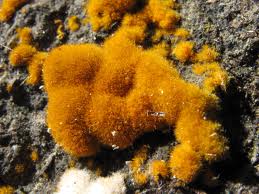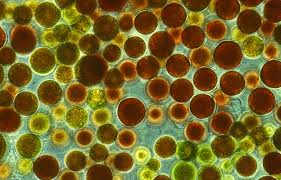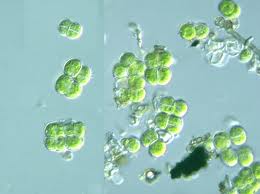
Number of species in the collection: 32.
Classes:
Chlorodendrophyceae (small group of unicellular swimming algae)
Chlorophyceae (mainly freshwater unicellular or colonial green algae)
Trebouxiophyceae (microscopic, commonly symbiotic or parasitic green algae)
Ulvophyceae (mainly marine green algae)
Pictures of Chlorophyta:












Characteristics of Chlorophyta:
Las algas clorófitas (que significa plantas verdes) son uno de los filos de plantas más diversos, aunque su número de especies (más de 4.500) no es equiparable al de las plantas con flor. Tienen una distribución mundial y habitan desde los desiertos mas secos, a las nieves perpétuas de la antártida, aunque su máxima diversidad se hubica en los trópicos.
Son organismos acuáticos o en ocasiones terrestres, fotosintéticos o salvo algunas excepciones parásitos, unicelulares o pluricelulares pero con células no muy especializadas, en ocasiones de varios centímetros pero formados por una única célula. Presentan clorofila a y b y almacenan almidón en sus plastos. Poseen unos ciclos vitales variados, con especies con ciclos parecidos al de los animales y otras que necesitan varias generaciones para completarse. Generalmente poseen fases haploides y otras diploides, aunque la duración de cada una de estas es muy variable.
Las algas clorófitas juegan un papel muy importante en los ecosistemas aquáticos, ya que son la base alimenticia de muchos organismos. Son un grupo muy antiguo que ya estaba completamente formado incluso antes de la aparición de los animales.
Phylum: Chlorophyta